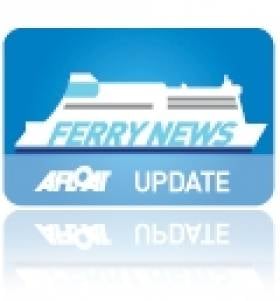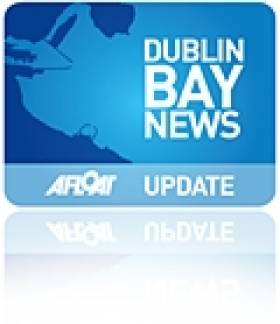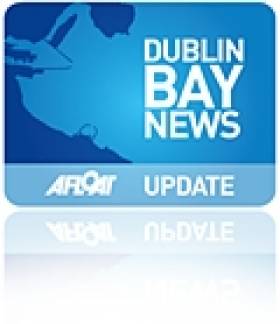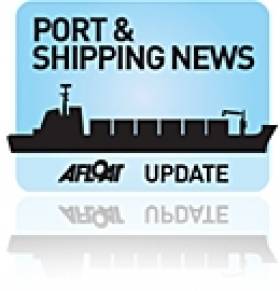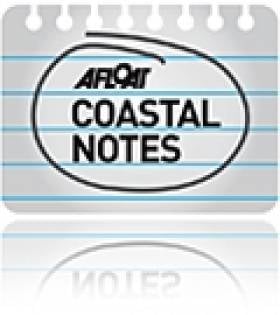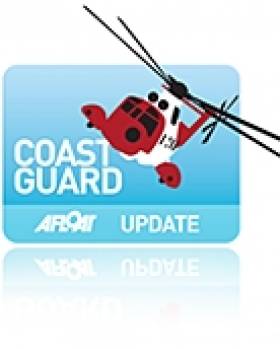Displaying items by tag: wind farm
Fishing Industry Opposed to “Grab” of Areas by Wind Farm Developers
The Irish fishing industry is not being consulted properly about the development of offshore wind farms, according to the Chief Executive of the longest-established fish producer’s organisation in the State, the Irish Fish Producers Organisation.
According to Aodh O Donnell, "fishermen have a right to be consulted because it affects their livelihoods." Available charts indicate that most of the rich Irish Sea fishing area is targeted for turbine development. Fishing vessels could be displaced if there is an untrammelled development of Offshore Wind Turbines. Our industry has already taken too many hits, but proper consultation could allow us all to co-exist.”
According to the IFPO, Environment Minister Eamon Ryan has signed off on six Irish Sea developments, which will move to planning stage. "There is unease that this appears to be rushed.”
Mr O Donnell was one of six fisheries representatives to take part in a fact-finding mission to a Floating Offshore Wind Farm in Kincardine, Aberdeenshire. CEOs of the other fish producer organisations were also involved.
The visit was arranged by an Offshore Renewable Energy (ORE) developer, Simply Blue Group.
“We are of the view that no planning should proceed until the new Maritime Area Regulatory Authority (MARA) is established. There are issues around marine interests and socio-economic or environmental impact assessments. But there are also huge questions about foreign ownership of Irish energy sources, which could affect future energy security,” Mr O’Donnell said.
. “Mutual respect must be given. For large wind farm developers, most of the first phase of applications for wind farms is in the rich Irish Sea fishing and spawning grounds. Unfortunately, international experience indicates that the co-location of Offshore Wind with trawl fisheries is not possible’.
“At present, we are experiencing a gold rush approach, as developers compete for space. We must work hard to defend our communities. We must avoid a lose-lose situation. The correct pathway must involve the recognition of traditional pre-existing fishing rights’.
“There is a lot of sea available for development. “But a land grab of traditional productive fishing grounds is not acceptable. The Minister and Wind Farm industry need to take account of the rights of our fishers, who are often the last to be consulted.”
Firm With Irish HQ Installs Portside Pontoon for Servicing Scotland’s Largest Wind Farm
An Irish company has installed a new pontoon for the servicing of Scotland’s largest offshore wind farm, as Marine Industry News reports.
Inland and Coastal Marina Systems, which is headquartered in Banagher in Co Offaly, was contracted to provide for the 30m x 4.4m heavy-duty pontoon.
It will allow allow safe berthing and access for vessels transferring work crews to and from the Seagreen wind farm project, which is currently under construction in the North Sea some 27km off the county of Angus.
The pontoon is installed at Montrose Port’s South Quay and comes with specialised anti-slip decking and a 20m access gangway with a cantilevered shore frame platform.
Marine Industry News has more on the story HERE.
Plans for Wind Farms Withdrawn Welcomed by Manx Ferry Operator
#FerryWindFarm - A decision to withdraw plans to develop wind farms in the Irish Sea which could allegedly have threatened the Isle of Man's vital maritime transport links has been welcomed by the Isle of Man Steam Packet Company.
According to the ferry operator's website, the Crown Estate has accepted a request from Centrica and DONG Energy, operating as Celtic Array, to end the offshore wind zone agreement for the Round 3 Irish Sea Zone, ceasing development activity and terminating its seabed rights.
Celtic Array had identified three potential development areas off the coast of Wales; the North East Potential Development Area, which was put on hold due to concerns raised by the Isle of Man Steam Packet Company, Rhiannon and the South West Potential Development Area.
All of these schemes have now been abandoned, with Celtic Array blaming challenging ground conditions discovered during an assessment of the seabed in the zone and saying the project had become 'economically unviable with current technology'.
It has been reported that Centrica is taking a £40m charge as a result of the decision, 'principally in respect of writing off the total book value of the project', and that there are no plans to re-offer the zone to the market.
The Steam Packet have raised serious concerns about the proposed developments and the potential impact on its routes serving the island. The operator commented that if the NE development in particular went ahead the Island would face a 'wall of wind farms' across its key routes. That concern has been reflected by many others in the Island, including the Government, the Chamber of Commerce and Travelwatch Isle of man.
A further Irish Sea project, as previously reported on Afloat.ie is the proposed extension to the Walney Offshore Wind Farm, which is currently before the UK Planning Inspectorate.
The DONG Energy site is off the Cumbrian coast, 31km from the Isle of Man, and concerns have been raised about the potential cumulative impact on sea routes of this extension if developed alongside new wind farms in the Irish Sea.
Steam Packet Company CEO Mark Woodward said: 'We welcome the decision by Celtic Array to withdraw from its planned developments and the decision of The Crown Estates to agree that decision.
'For more than two years we and others in the Island have been raising serious concerns about the impact these developments could have on the Isle of Man. The development of the Walney Extension and these proposed sites, in conjunction with existing wind farms, could have left us without viable adverse weather routes, which are essential for safe navigation in the adverse weather which can be common in this sea area.
'Cancellations arising from the lack of alternative routes would have had a massive impact on the Isle of Man. Our services are a lifeline for the Island, carrying around 600,000 passengers annually, 170,000 cars, motorcycles and coaches, and more than 400,000 metres of freight vehicles which provide critical supplies.
'The loss of viable adverse weather routes would have threatened our ability to provide those vital services, resulting in a serious negative socio-economic impact for us and the whole of the Isle of Man.'
He added: 'Many of us in the Island have been saying throughout that the sites proposed by Celtic Array were not viable, and it is a shame it has taken so much time, money and anxiety for the Island for the developer to arrive at the same conclusion.
'The withdrawal of these proposed developments is a sensible step and one we, and I'm sure many in the Island, welcome.'
#DublinArray - A model of the proposed Dublin Array wind farm for Dublin Bay will not now go on display at Dun Laoghaire Public Library as reported yesterday.
Cllr Fitzpatrick has tweeted Afloat.ie this morning to say: 'A model of the Dublin Array proposal will NOT be on display in Dún Laoghaire library tomorrow.Apologies'
Submissions from the public on the proposals will be accepted before Saturday 1 June.
As previously reported on Afloat.ie, the Dublin Array scheme would comprise 145 turbines standing 160m high, situated some 10km from the coast on the Bray and Kish Banks in Dublin Bay.
Dublin Array Developer Applies for Foreshore Lease
A foreshore lease application has been lodged for a series of offshore wind farms in Dublin Bay.
The Dublin Array, to be situated on the Bray and Kish Banks some 10km from the coast, would consist of 145 turbines, each 160m high, operated by Saorgus Energy Ltd.
The project has been criticised by the Coastal Concern Alliance due to its approval in contravention of an EU directive that requires a strategic environmental assessment.
Further details are available at www.saorgus.com and www.coastalconcern.ie.
Belfast Invests in Port's Future
Belfast Harbour's new corporate plan details investments worth £92m (€103m) in improving the port and supporting renewable energy.
Handy Shpping Guide reports that the single biggest investment in the three-year-plan is a £40m (€44.7m) scheme for a logistics terminal to support offshore wind farms in the Irish Sea.
While the port acknowledges that the economic downturn means only marginal growth is forecast for tonnages through the Port of Belfast, it says "significant opportunities" exist in diversitying into other sectors such as the 'green economy'.
Belfast Harbour commercial director Joe O’Neill says the corporate plan also "sets the framework" for future development and expansion of the port over the next 20 years.
Donegal Wind Farm Faces Criticism
A Donegal conservation group has hit out at An Bord Pleanála for approving plans for a 13-turbine wind farm in a scenic Gaeltacht area.
The Irish Times reports that businessman PJ Molloy originally sought permission for 35 wind turbines with a 90m blade diameter to be erected near Glenties.
This number was reduced following consultation with the Donegal County Council and the Department of the Environment regarding the impact to protected species in the local habitat such as freshwater mussels, Atlantic salmon and otters.
However the Gweebarra Conservation Group has criticised the granting of planning permission, arguing that the Government is "giving tax incentives to private investors to destroy our hills and bogs".
The group also highlighted concern over health dangers potentially associated with the high-voltage power lines necessary to transmit electricity from the turbines.
The planning board voted five-to-two to grant permission for the turbines, taking into account both the National Renewable Energy Action Plan and the suitability of the site - which falls outside exclusion areas under Donegal County Council’s development plan.
Wind Farm 'Ready to Go Tomorrow'
The backers of a proposed new wind farm in the Irish Sea near Wicklow have said the project would be ready to go "tomorrow" if given permission to connect to the national grid.
Planning permission has already been obtained by Fred Olsen Renewables for the €3 billion Codling wind park project, which it set to consist of 220 turbines with a potential generating capacity of 1,100 megawatts.
Graham Cooper of Fred Olden Renewables told The Irish Times that the project is ready to start, but the Commission for Energy Regulation not yet given consent for connection to the Irish national grid.
The Irish Times has more on the story HERE.
Coastguard to Carry Out Irish Sea Windfarm Exercise
The UK's Maritime & Coastguard Agency in conjunction with RWE npower renewables, the RNLI and RAF Search and Rescue, are due to exercise communications, co-ordination and response to a series of mock-maritime incidents in and around the wind turbines at the North Hoyle and Rhyl Flats Offshore Wind Farms on the Irish Sea.
Rhyl Flats Offshore Wind Farm is a 25 turbine wind farm approximately 8 km north east of Llandudno in North Wales. It is Wales' second offshore wind farm and the third offshore wind farm to be built within Liverpool Bay. It has a maximum rated output of 90 MW.
The Exercise is due to take place on Sunday 5th September.
The exercise will be coordinated by Holyhead Coastguard, and involves multiple agencies, including the North Hoyle and Rhyl Flats wind farm operators, maintenance teams and a number of service vessels.
Jim Paton, Rescue Co-ordination Centre manager at Holyhead Coastguard said:
"We are very keen to practise various elements of a search and rescue within a wind farm and to test rescue and evacuation procedures for 'walking wounded' from intermediate and lower platforms of a wind farm tower. With colleagues in the RNLI we will exercise the appointment of the Rhyl RNLI all weather lifeboat as on scene co-ordinator to search the surface sea area for missing people with multiple search units employed.
"We want to be able to test procedures for the rescue and evacuation of persons from a turbine nacelle and with the RAF, test a helicopter evacuation of a casualty from the nacelle of a wind turbine. We will also be exercising winching procedures within a wind farm complex using lifeboats, a helicopter and a wind farm service vessel all working with each other. We expect the exercise to take about four (4) hours from midday to 4.00 pm."
The exercise will begin with Holyhead Coastguard receiving a call reporting a 4x4 vehicle and trailer parked in Rhyl overnight. The first informant will also explain that he had seen two people from this vehicle launching a small boat from the slipway opposite at around 8.00 pm the previous evening, and who haven't been seen since. Additionally the Coastguard will hear about the need for an individual to be airlifted from somewhere within the North Hoyle offshore wind farm .
Jim Paton continued
"As wind farms become larger and more involved; an emergency service such as the Coastguard must be fully aware of the challenges of search and rescue within such complexes when the weather and sea conditions at the time of the incident may be extremely hostile."



























